
The Pioneer SX-727 is widely considered one of the better receivers ever made by the company. With its beautiful walnut cabinet, elegant look, high build quality and versatile connectivity it is definitely a classic. Introduced in 1972 with a retail price tag of $349.95 it was a popular product for Pioneer. It can handle up to two tape decks, two turntables, three pairs of speakers and a microphone. It produces 37 watts per channel and was one step down from Pioneer’s top of the line 54 wpc SX-828.
The SX-727 has Pioneer’s recognizable aesthetic of the early 1970’s. The walnut cabinet lends an air of sophistication paired with the receiver’s silver and black faceplate. When powered on, the dial area illuminates in a soft blue, joining the two signal meters and source indicator lights that sequentially light up when cycling through the input selector.
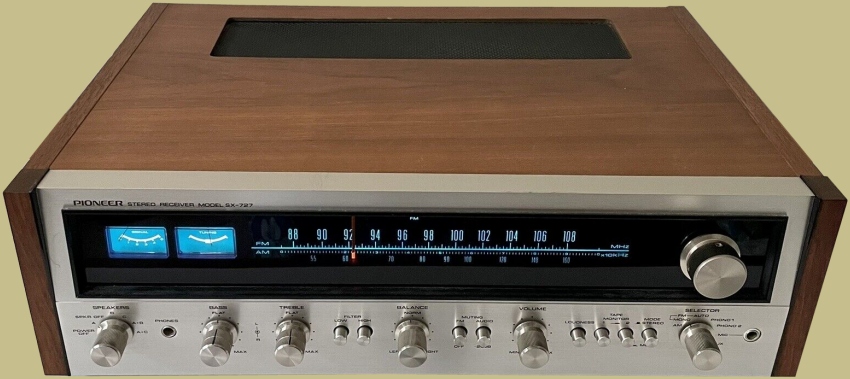
Above the augmented tuning scale, a dedicated light indicates stereo FM reception. A sizable tuning knob with an effective flywheel mechanism controls tuning. The lower section of the front panel contains all of the controls in a linear configuration. At the far left, the power switch doubles as a speaker selector with options for speakers A, B, C, A+B, and A+C, plus a speaker off position for headphone use alone. The 1⁄4 inch headphone jack is located adjacent to this switch.
Other controls include low and high filter push-button switches, a balance control, FM muting on/off, and an audio muting button lowering volume precisely 20 dB, a master volume knob, additional push-buttons for loudness, dual tape monitoring, and a stereo/mono switch. A seven-position input selector and single microphone jack are located at the far right of the panel.
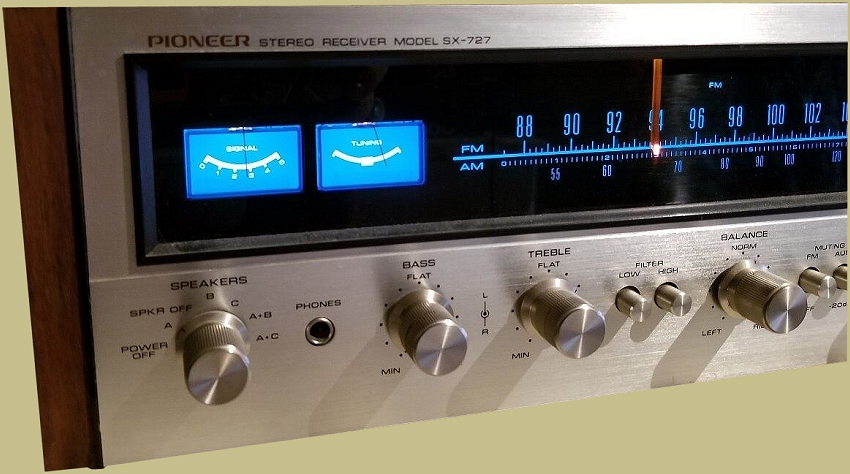
The dual bass and treble controls on the Pioneer SX-727 utilize continuously adjustable, finite click-stops, providing discernible steps of around 2 dB of boost or cut at 100 Hz and 10 kHz for the bass and treble controls, respectively. The rear channel knobs lack clicks but allow independent tonal adjustment. When utilizing the front knobs for simultaneous stereo control, a clutch system ensures matched increments of boost/attenuation between channels.

Tuner
The tuner on the SX-727 is excellent. It has both signal strength and center tuning meters. The FM signal strength meter’s lighting automatically turns off when you switch to AM, since the meter is of no use in that listening mode.
A low-noise junction type FET in the first stage and a 2-step RF amplifier are used in the front end section of the SX-727. The result of these components is excellent sensitivity (1.84V, IHF), high signal to noise ratio (70dB), spurious rejection of more than 90 dB at 98 MHz and cross modulation resistance.
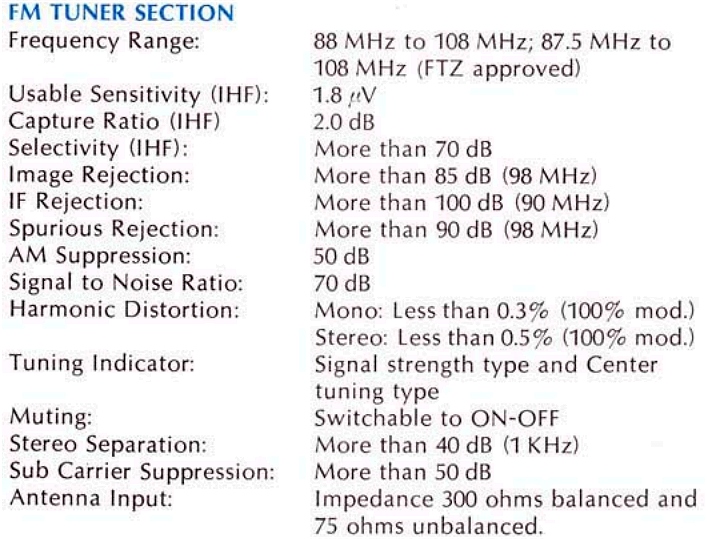
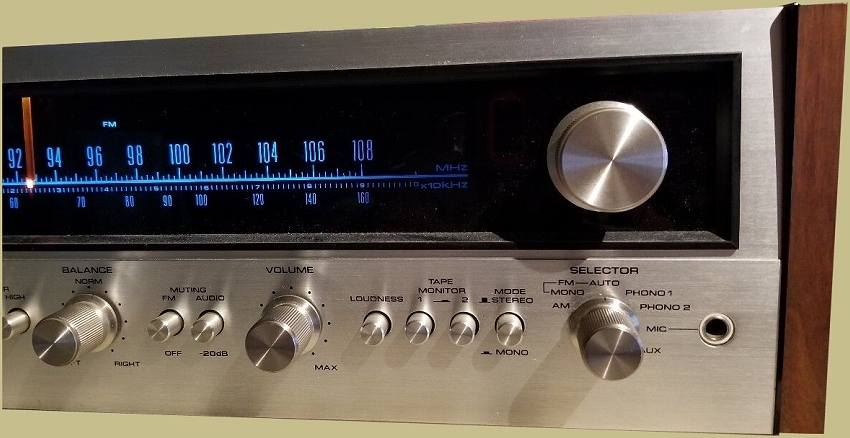
Reviews
What have owner’s of the Pioneer SX-727 said about it?
One of the best Pioneer receivers ever made.
The feel and look of the knobs, the pre-in/outs, 3 sets of speaker outputs, and the REAL walnut cabinet – It just reeks of quality. The sound is very, very good with a wide sound stage and a really good tuner that is very selective.
A sweet-sounding integrated receiver loaded with flexibility and options.
This SX-727 is a very good sounding receiver. Very sensitive FM reception. Beautiful look.
Works as well as the day I first purchased it in 1973. Excellent versatility and sound.
The walnut-finish wooden cabinet looks beautiful and the build quality is excellent.
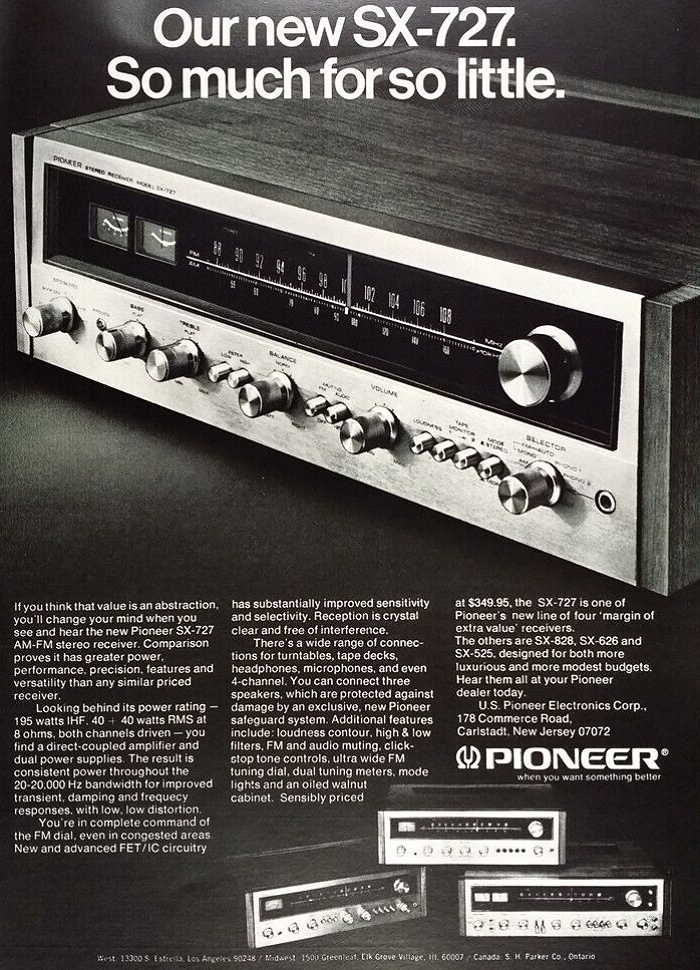
Specifications
- Tuning range: FM, MW
- Power output: 37 watts per channel into 8Ω (stereo)
- Frequency response: 7Hz to 80kHz
- Total harmonic distortion: 0.5%
- Damping factor: 40
- Input sensitivity: 2.7mV (mic), 3mV (MM), 200mV (DIN), 200mV (line)
- Signal to noise ratio: 85dB (MM), 95dB (line)
- Output: 200mV (line), 35mV (DIN)
- Speaker load impedance: 4Ω to 16Ω
- Semiconductors: 4 x FET, 4 x IC, 55 x transistors, 34 x diodes
- Dimensions: 19 1/16″ W x 5 1/8″ H x 15 3/8″ D (485 x 150 x 390mm)
- Weight: 30 lbs 14 oz (14kg)
Build Quality
The Pioneer SX-727 utilizes modular circuit board construction which makes it easy to work on. Separate boards handle the FM tuner, AM/FM IF sections, preamp, tone/switching, output protection, power amplification, and power supply.
A protective relay eliminates turn-on thumps and delays speaker connection for two seconds once the receiver is turned on, preventing pops. The FM front-end employs a two-stage RF amp with FET input stage. Ceramic filters and integrated circuits comprise the IF stage while an IC handles MPX decoding.
The tone controls use feedback circuitry and the amps take advantage of positive and negative supplies for direct speaker coupling with no coupling cap required.
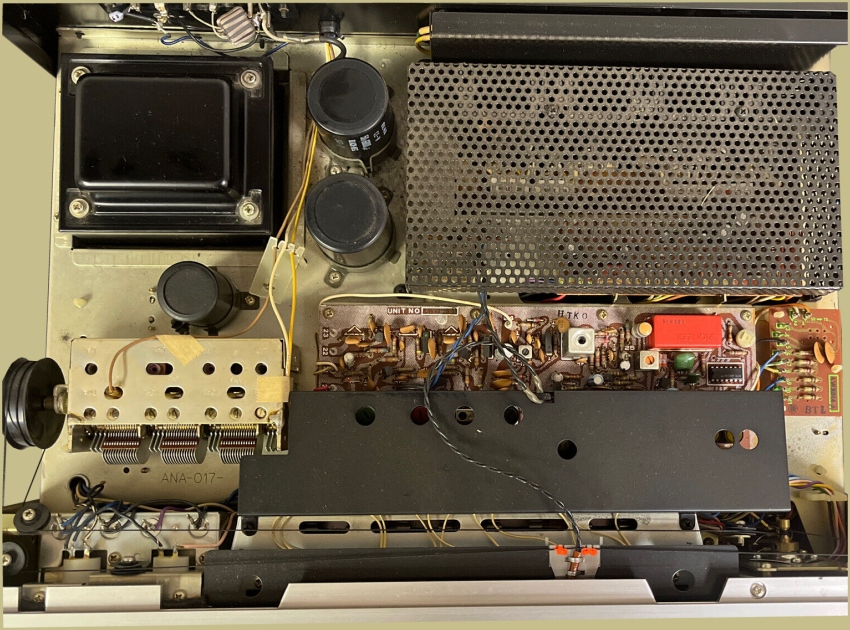
The power amplifier stage of the Pioneer SX-727 utilizes direct-coupled, pure complementary OCL (output capacitorless) circuitry. This eliminates coupling capacitors between stages, allowing signals to feed directly to the speakers. Removing capacitors provides a wide power bandwidth and extended frequency response reaching into the ultra low and high frequency ranges. Additionally, the OCL design helps reduce intermodulation distortion.

Rear Panel
The rear panel layout is straightforward including two phono inputs, aux input, two tape in/out loops, preamp out/main in jacks, and connections for two headphone sets. The clean rear design aids accessibility and organization.
A small black jumper block on the input/output jacks connects the preamp outs to the main amp ins. Removing this jumpers allows the connection of other devices to the stereo or to use it as a separate preamp or amp.
The rear panel also has antenna terminals (75/300 ohm), one switched and two un-switched AC outlets, fuse, AM fold out antenna, and DIN recorder jack.
Of course, we have to mention Pioneer’s unique speaker connectors. They use plugs for connectors and, while the idea is good, the fact that the plugs get lost over the years tends to be a problem. Fortunately, originals as well as new speaker plugs can be found on eBay easily.

When Stereo Review magazine tested the Pioneer SX-727 they had this to say about it:
Having put the Pioneer SX-727 through every test we can perform and having listened to it for some twenty hours or more, we find it to be a rugged, reliable instrument that certainly represents state-of-the art receiver technology in its design and performance.
The SX-727 is an excellent receiver well worth your attention. Its direct-coupled power amplifier gives it adequate power to run almost any speakers. It has all the features you’d want in a receiver. And, it looks great too!
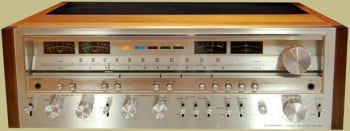
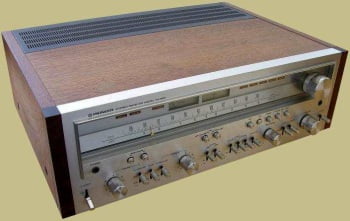
If you could only have one receiver, which one would you choose and why?
Marantz 2252B or Pioneer SX-727 all in mint condition?
This is my dilemma, only one but which one?
The 2252B has a mid range tone control while the SX-727 can handle 3 sets of speakers. The SX-727 has the older early 70’s vintage look while the 2252B has the later 70’s look. Personally, I’d go with the 2252B just because it’s a Marantz and will likely appreciate in value faster. But, in terms of performance they’re similar. Probably just comes down to which looks better to you.
Oh, and the Pioneer has those weird speaker plugs as well.
The 2252B is a much better receiver IMHO. I’ve had them both and the Marantz just punches above it’s weight class all day long. The 727 is one of my favorite receivers, but the 2252B just out-classes it.
The advertising sheet in the above article is for an SX-737, the 727’s successor. I think it was inserted by accident.
Yep, you’re right. Fixed. Thanks!
Newbi here…I am 66 and still have my SX-727…it is in stunning condition and has yet to give my any problems what so ever…purchased it in 1972 when it first came out…the quality of the sound is unmatched as is the “furniture” (the walnut case…I play every type of music through this unit and it is still crisp and clear as ever…am driving a pair of Advent large as the mains and the secondaries are AR-2ax.